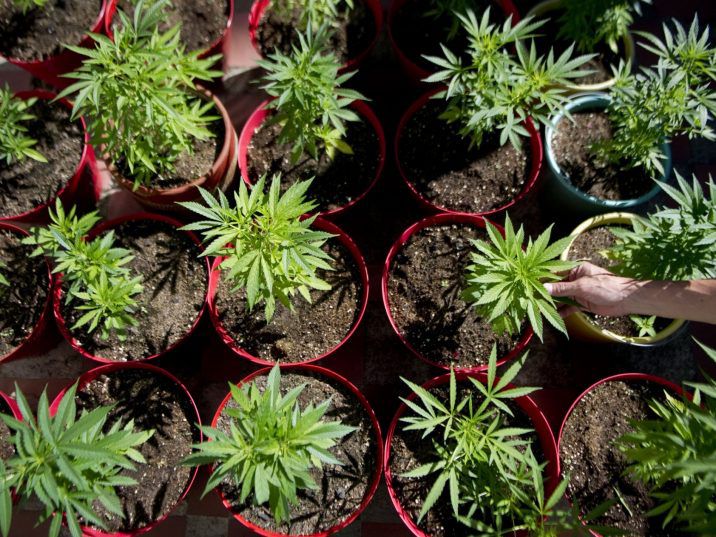You are here
Home 🌿 Marijuana Business News 🌿 Canada’s cannabis industry has many problems, the biggest of them all is that it’s a cash-burning machine 🌿Canada’s cannabis industry has many problems, the biggest of them all is that it’s a cash-burning machine

The cannabis industry began planning for a large recreational market when the Trudeau government made legalization a campaign promise in 2015. On October 16, 2018, the day before recreational cannabis use became legal, there were 129 medical cannabis sales and cultivation licenses given out by Health Canada.
Two years later, the cannabis industry has become a plant growing, oil extracting behemoth, and Health Canada’s sanction of outdoor cultivation is only making the beast larger, with 540 licenses issued and counting. The latest data shows the potential for up to 400 tons of outdoor cannabis to be grown this year, as per BCMI Research, which could supply the whole industry for its entire THC extraction needs, and that’s from 1,344 acres of licensed growing area.
Race to the bottom
Despite the robust growth, the problems in the industry are many, including a “race to the bottom” in the pricing of so-called “large size, value format” whole flower. The heavy DAD (Daily/Almost Daily) user is the big beneficiary — an eighth (of an ounce) of high quality, high THC legal cannabis can now be had for half the price of a fifth of spirit alcohol.
Although cannabis licensed producers (LP’s) and even provincial cannabis boards repeat the mantra that more supply and lower pricing is required to drive out the black market, why are big LPs so intent on growing more cannabis and producing more derivatives?
Accounting practice incentivizes producers to grow more marijuana than they can sell and process so that lower unit costs and positive gross margins can be reported, fooling investors into giving them more money. Later, the excess inventory is quietly written off and the cycle begins again. There will be no solution until participants see the industry for what it is: a cash-burning machine.
Companies that have never made a gross, let alone net profit continue to raise capital, mainly from professional stock traders, hedge funds and short sellers that anticipate capital raises and then cover their winning bets with new issues from ailing companies.
Article content continued
Short sellers have made a bonanza from the promotion of cannabis and don’t want to see the goose that laid the golden egg eaten for Thanksgiving dinner. They incentivize investment bankers who help weak companies raise money, knowing the pros will be there to flip their stocks one more time.
The more cannabis LP’s produce, the lower reported unit cost and higher gross margin per gram, making financial results more appetizing to potential investors and bankers.
Company losses are then funded by raising money via term loans, revolving credit lines, convertible debentures, highly dilutive unit equity deals with warrant sweeteners and “at-the-money equity programs”, whereby companies can sell stock and raise cash directly from the market, fittingly called ATM’s. The capital allows companies to continue expanding into processing and manufacturing, which means oversupply in vape pens and other cannabis extract-based products is guaranteed down the road.
Fixing the dysfunctional industry
The only way to get a lower cannabis supply and higher prices is for governments to initiate constructive structural changes to the dysfunctional industry they created.
We need a reduction in the minimum $1 per gram excise tax, which began at 10 per cent of a $10 gram but now hovers at 25 per cent as cannabis prices have fallen by 60 per cent. We need a cut in the large markup the provinces charge producers for their inventory and distribution services which often requires product to crisscross the province. We need the removal of government wholesalers outright in favor of private market distribution, as is the case in Saskatchewan, where six wholesalers were permitted at the end of fiscal 2020.
We need consolidation in the LP space where over two dozen public companies continue to burn up investor funds to expand production and window dress their financial results rather than invest in clinical trials or product innovation. We need cannabis prices to stabilize at current levels because legal flower is now cheaper than that offered illegally, and a massive store rollout in Ontario and other provinces should finish the job of eradicating the black market.
These measures would make for a healthier industry, get government out of business, reduce the social and personal cost of more addiction to cannabis and allow long-suffering investors to finally partake in the fruit of their investments.
Chris Damas is the president of BCMI Research, investment research and corporate consulting company based in Barrie, Ontario.
420 Intel is Your Source for Marijuana News
420 Intel Canada is your leading news source for the Canadian cannabis industry. Get the latest updates on Canadian cannabis stocks and developments on how Canada continues to be a major player in the worldwide recreational and medical cannabis industry.
420 Intel Canada is the Canadian Industry news outlet that will keep you updated on how these Canadian developments in recreational and medical marijuana will impact the country and the world. Our commitment is to bring you the most important cannabis news stories from across Canada every day of the week.
Marijuana industry news is a constant endeavor with new developments each day. For marijuana news across the True North, 420 Intel Canada promises to bring you quality, Canadian, cannabis industry news.
You can get 420 Intel news delivered directly to your inbox by signing up for our daily marijuana news, ensuring you’re always kept up to date on the ever-changing cannabis industry. To stay even better informed about marijuana legalization news follow us on Twitter, Facebook and LinkedIn.




